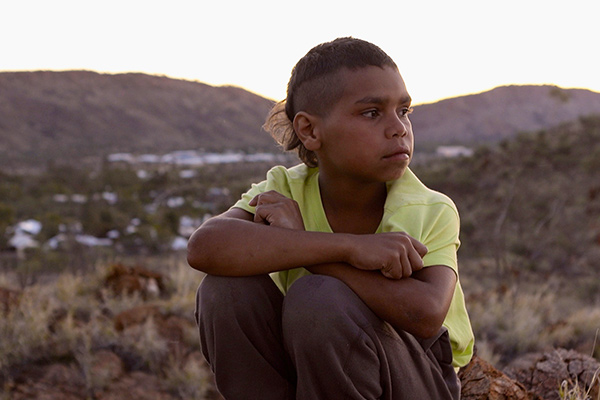
Photographer: Maya Newel
How to listen and learn from Indigenous children in order to help them
At the time of filming In My Blood It Runs, Dujuan Hoosan was just 10 years old, but he could see how the education system did not value his cultural knowledge.
Dujuan is a proud Arrernte and Garrwa boy who lives in Hidden Valley town camp in Alice Springs. He also has healing powers; a gift his grandfather passed on to him.
“It’s my job to look after the people,” he says in the film.
In one scene, his aunt asks him to heal her while she is in a hospital bed with a leg wound.
But we also see Dujuan struggle with school attendance — a challenge many Aboriginal and Torres Strait Islander children face across the county.
The Australian Institute of Health and Welfare reports that primary school attendance rates for Indigenous students “did not improve between 2014 and 2018 and they remained below the rate for non-Indigenous students”.
By following Dujuan we can learn why this is a challenge for young Indigenous kids and Indigenous families.
Trailer: In My Blood It Runs
SYNOPSIS
Ten-year-old Dujuan is a child-healer, a good hunter and speaks three languages. As he shares his wisdom of history and the complex world around him we see his spark and intelligence. Yet Dujuan is ‘failing’ in school and facing increasing scrutiny from welfare and the police. As he travels perilously close to incarceration, his family fight to give him a strong Arrernte education alongside his western education lest he becomes another statistic. We walk with him as he grapples with these pressures, shares his truths and somewhere in-between finds space to dream, imagine and hope for his future self.
About the film: https://inmyblooditruns.com

‘I’m a bush kid’
Dujuan can speak three languages but struggles with reading and writing at school.
“If you finish primary school and then finish high school, then you learn. But I’m a bush kid,” he said.
“I was born a little Aboriginal kid. That means that I have a memory, a memory of Aboriginal people. In my blood it runs.”
“I think what non-Indigenous people can do as a really basic step is to really know and understand the local history of the land that they occupy,” she said.
“And recognise that that land has been cared for and looked after by generations of First Nations people.
Source
Alexis Moran
ABC News
Have a story to tell or news to share
Let us know by submitting a news story, an article, a review, a white paper and more …
Submit

